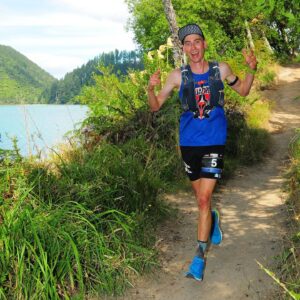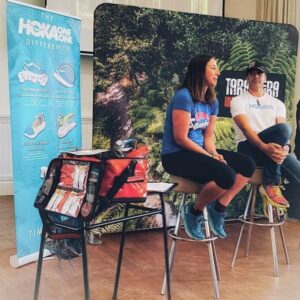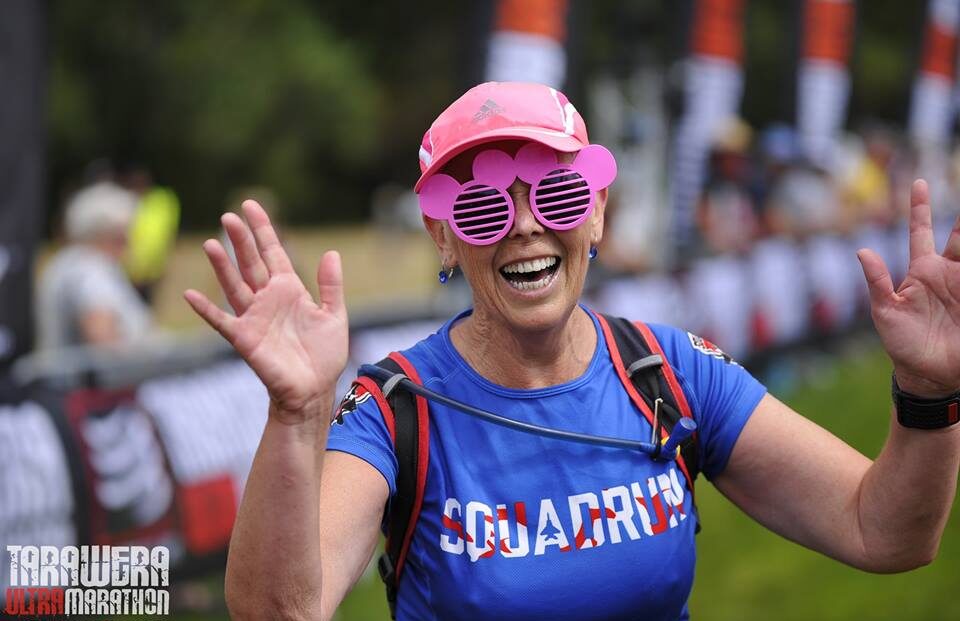Whether you are running 50 or 100 km at the annual big friendly, we want you well prepared to have your best day this coming February.

KISS
Fitness comes through the accumulation of time on feet. Follow these three steps in order to build your fitness.
- Start by maximising your training frequency. Simply get out as often as you can. 20 minutes will do when you lack 40 minutes or more. A walk will count in the absence of a run. Just form a habit of doing something most days.
- Once you have established a regular cadence of training, start to gradually increase your training distances with emphasis on one longer run per week.
- Worry about how fast you are running last as it is least important. Just run to feel and for the most part make your training feel easy.
Optimal training is the maximal absorption of training stress. Doing as much as you can without doing too much is the real secret. Somewhere between doing not enough and getting injured is where your training load should fall and it should be specific to you so listen to your body. When we rest we get better so prioritising adaptation days is important for those doing as much as they can.
Forget the complicated gadgets, getting lost in the technology and data will not make you faster nor will it help you on race day. There isn’t one watch that will make anyone faster and the best computer is the one between your ears.
The best running you will do is probably right out your front door.
A road run is better than no run at all and Tarawera suits runners that know how to run. You need not seek out similar trails in order to prepare for Tarawera, no matter where you are there is suitable running nearby. Most runners that prosper at Tarawera are simply good marathon runners.
Get into gear.
Whilst the 50 and 100 km events have a mandatory gear list for your own safety, shoes don’t have to be quite so complicated. With volcanic pumice substrates the Tarawera trails are typically fast training and generally dry underfoot. Unless it is raining on race day or raining heavily the day prior, the trails will generally accept an ordinary road shoe if that is your most comfortable shoe. The most important shoe is the one that fits you well, the one you have tested and are familiar with. Only under exceptional circumstances would a specialty shoe be required.
Get ready for race day eating.
Unlike shorter distances, an ultramarathon requires you replace some calories lost/spent during exercise. Fortunately the Tarawera aid stations are well stocked to meet your needs however it is good to practice fuelling in your training.
Start by thinking of the stomach is a muscle that requires training. Consider doing some runs full, empty, or somewhere in between because these are the situations that you will face on race day.
Like everything else nutrition need not be complicated. Check the race website to find out what will be on offer at the aid stations and familiarise yourself with them prior.
For those establishing a nutrition plan, start with 250 cal per hour and about 600ml per hour. About that will do, a bit more if you are pushing hard and it is hot. The safest bet and simplest method when it comes to water is to drink to thirst.

Your headlamp, May it be a light to you in dark places, when all other lights go out.
For many runners the finish line will meet you in the dark hours of Saturday night or potentially even Sunday morning. If you don’t already have one, a headlamp is essential equipment. Being familiar with its use and the sensation of running/walking in the dark as a useful training consideration. Closer to race day, in the weeks through the New Year it is a good opportunity to get out after dark for some illuminating trail time.
Drop bags, the tactical resupply.
Both the 50 and 100 km events allow for runners to have a drop bag deployed to them at key places on the course. Check the map for where these will be and think long and hard about what useful items you may benefit by including. Things like, fresh socks, another pair of shoes, anti-chafing cream, some nutrition, hydration or treats to see you through. Many things may make this list and established athletes would gladly share their ideas.

Frame of mind.
Irrespective of how much you have trained, one thing you do have control over on race day is how you choose to feel. There are many proven beneficial interventions that have shown to have a positive outcome when implemented whilst running. Worth practising prior to race day, these three will help.
- Imagery. Visually witnessing others smile or imagining it will help you slow down less by making you feel better. Some people will carry a photo of a loved one or employ the tactic of smiling and others and watching them smile back. Whatever you do, trying to find happiness as you run. You will get out what you put in so say something nice to someone or complement a volunteer or marshall.
- Set goals. We all know it feels great to achieve something and that motivates us to strive to achieve more goals. Set achievable goals like – I want to run well to that next bend in the trail. – I want to focus on my form, running cadence and breathing for the next two minutes. Complete some goals and set some new ones. The more success you have at this the better you will run.
- Mantra. Find a short saying you can complete with repetition that will help lift your spirits and remind you that you are ready and running well. Repeating a positive affirmation is been shown to have positive performance outcomes. Something like – I have trained for this and I am ready.
Do your homework and know what’s next.
Spend some time on the website and study the course. Be familiar with the distances between aid stations and the types of trail you will encounter (mostly forestry roads and single Trail). Knowing how much hydration to take before leaving and aid station is essential as some sections of the course are remote with little aid. Check the results from previous years to get an understanding of how much time might be spent by you on parts of the course.
Bring cash and be ready to party.
The runners Expo the day before is an excellent place to nab a bargain or to complete the missing piece of your drop bag puzzle. The finish line on race day is an excellent place to hang out with friends and enjoy some beanbag time with a beer. The whole event takes place over days and is designed to be a genuine Trail runners festival with an emphasis on hugs, high-fives and fun! See you there in February.

